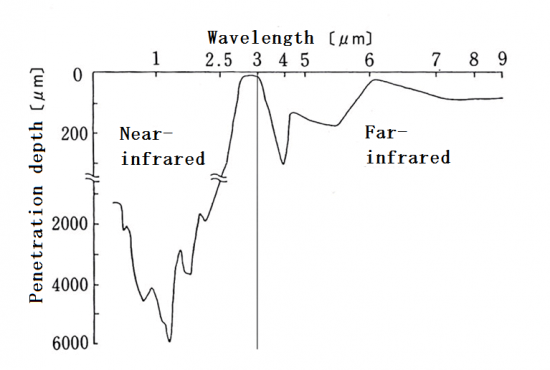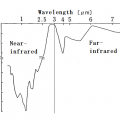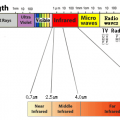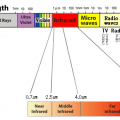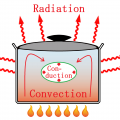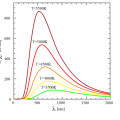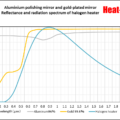INDEX
(1) Infrared Rays are subdivided into several scheme.
ISO 20473 specifies the following scheme:
| Designation | Abbreviation | Wavelength |
|---|---|---|
| Near-Infrared | NIR | 0.78–3 µm |
| Mid-Infrared | MIR | 3–50 µm |
| Far-Infrared | FIR | 50–1000 µm |
(2) Difference in frequency = The difference between the heating capacity
By “Wien’s displacement law”, the heater is shifted to near-infrared rays, so that it becomes high temperature.
For the high-temperature heating applications, the near-infrared rays is a good choice.
(3) Difference in frequency = Resonance with the natural vibration frequency.
When the frequency of electromagnetic waves is in agreement with vibration (lattice vibration) of the molecule of a certain substance, the energy of radiation of electromagnetic waves will be absorbed (resonance absorption), vibration of a molecule is made to increase, and temperature rises.
The energy required for excite of vibration and rotation of the molecule changes with chemical structure of the molecule.
This absorption intensity and absorbed energy frequency are called “absorption band.”
Therefore, what has an absorption band in a near-infrared zone is suitable for near-infrared rays heating.
Similarly, what has an absorption band in a far-infrared zone is suitable for far-infrared rays heating.
(4) Penetrating power = Human body
The near-infrared rays permeate in several millimeters depth from the skin surface.
Recently, a method of authenticating individuals by using this feature, it is checked in the near-infrared vein pattern of the palm and inner finger has been introduced in the bank.
At the about 0.2mm from the skin surface , the energy of the far infrared rays, will be absorbed almost.
N.Terada et al,”Spectral radiative proper of a living human body”,International Journal of Thermophys., vol.7, pp.1101-1113, 1986.
(5) Transmittance = Atmosphere
There is a band that is easy to absorb infrared rays in the atmosphere.
4.3 micron band is the absorption band of carbon dioxide.
6.5 micron band is the absorption band of water vapor.
It is called “Atmospheric window” a good band transmittance in the infrared rays, and it is used in weather observation by satellite.
(6) Difference by the color
Color of an object is determined by the absorption and reflection of the wavelength of the light.
Wavelength of light visible to the naked eye is in the range of about 0.4 ~ 0.7μm.
White things is much reflects visible light, and Black thing is much absorb visible light.
Limit at the visible light band, black things temperature will increase by absorbing more energy than white things.
The wavelength of 0.7 ~ 3μm, near-infrared rays is next to visible light.
There is not directly related to the ease of absorption of infrared and color.
However, the wavelength of near-infrared and visible light are adjacent,
Likely to have the property of reflecting near-infrared light also has a high white things,
It is thought likely to have the property of absorbing near-infrared light is high and black thing in reverse.
Approximation of the adjacent bands, so fades wavelength is about moves away, it is the near-infrared order> mid-infrared> far-infrared rays.
If it prints on a white paper in black ink and it is made to dry only black ink when drying printed matter, the near-infrared rays which energy concentrates are suitable for black ink.
Conversely, in color printing, far-infrared rays with far less differences of the absorptivity by a color are suitable.
In addition, the innovation of the film maker and paint manufacturers have been developed, white things with high infrared absorption rate, and black things with high infrared reflectance rate.
 HEAT-TECH Best Technology Online Shop
HEAT-TECH Best Technology Online Shop 
